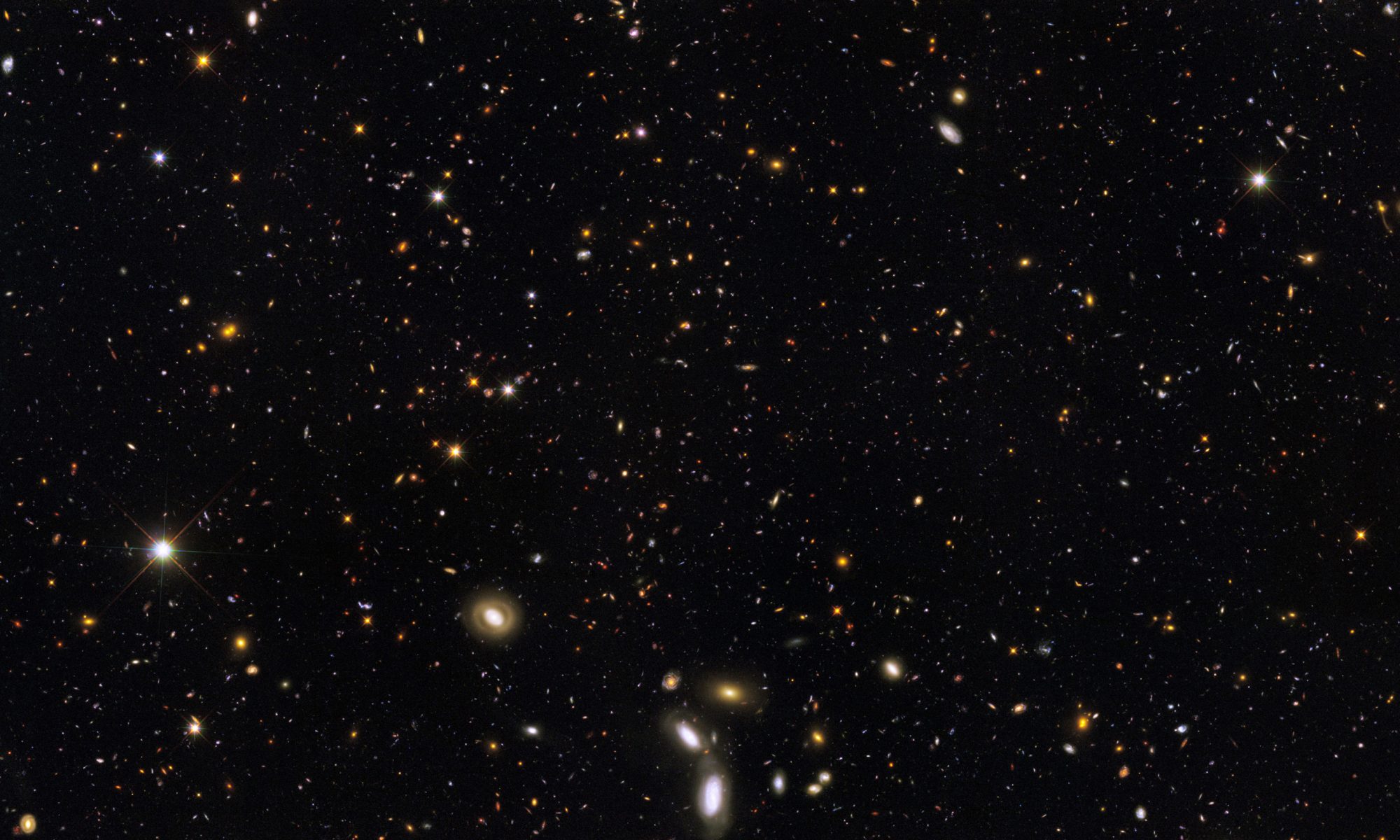Although Ashbery’s “Self-Portrait in a Convex Mirror,” Basho’s haiku, and Pound’s “In a Station of the Metro” may be a-logical, each of these is still afforded a movement down the page. These movements are governed by and served by the creation of a networked dialectical space through linked comparisons of image. This space allows for Pound’s “intellectual-emotional complex” to generate intuitive comprehension in a reader at some level.
The shorter examples are more easily intuited because there are fewer images and therefore fewer links in the network between images. Because of this, the movement from image to image through the poem becomes less complex. With each added image, however, the networked dialectical space becomes geometrically more complex, with connections burrowing multiple levels into the movement of the poem. The complexity runs the risk of creating a movement that is nearly incomprehensible to a reader. This sort of poem may serve a singular or dual purpose, but if it is not reaching an audience, or if the audience eschews the poem for its complexity, then there is a clear detriment to the poem, to the a-logical meaning of the poem, and finally by extension, to the poet himself, no matter how many layers of complexity he conflates into one.
Works Cited
Ashbery, John. “Self-Portrait in a Convex Mirror.” PoemHunter.com. Web.
Beilenson, Peter, trans. Basho. “Summer Grasses.” haikupoetshut.com. Web.
—. Basho. “Moon and Clouds.” haikupoetshut.com. Web.
Blyth, R. H., trans. Basho. “Summer Grasses.” haikupoetshut.com. Web.
—. Basho. “Moon and Clouds.” haikupoetshut.com. Web.
Pound, Ezra. “A Few Don’ts by an Imagiste.” Poetry 1.6 (1913): 200-206. JStor. Web.
—. “In a Station of the Metro.” Poetry 1.7 (1913): np. Poetry Foundation. Web.
Stryck, Lucien, trans. Basho. “Summer Grasses.” haikupoetshut.com. Web.
—. Basho. “Moon and Clouds.” haikupoetshut.com. Web.
Appendix A
The following is a work in progress. It is an experiment as response to and compression of Ashbery’s poem into a digestible form. After working through the analysis, I find it needs more work on incorporating the image-logic inherent in the original. In addition, the intention is to have one line for each section of Ashbery’s poem.
Portrait_in_a_Convex_Mirror.zip
Great art to copy all that you saw in the glass.
An artist, never paid, stares at a hemisphere mirror, sees himself and paints his hand onto a wooden hemisphere canvas – his face, the room, a slice of window in background. A reflection of reflection of reflection. Surface soul, soul englobed.
A balloon holds the same shape as the canvas: round. Surface bubble of self: I am you, everything pops. Implosion violence returns the present and the present worries: souls cross the exterior surface of the perspective sphere. Stand inside, watch others see the trap inside this hemisphere.
Artists see all things as surface. Mistrust the eye. Mistrust thought. The soul stirs against the inside surface, gazes out, outward gaze of mistrust. All becomes dream, the dream becomes all. The soul sees out, reflects on the mirror, paints the reflection for the poet to reflect upon. Paper becomes a reflection of reflections upon the reflection of a reflection of a reflection.
